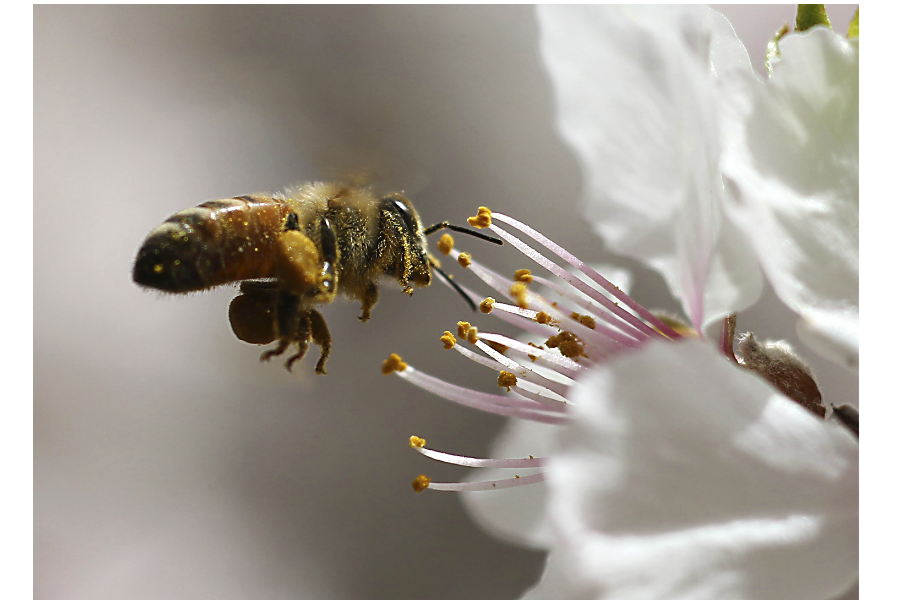How a group in Kenya is preserving its pollinators
Loading...
Every December to March, Martin Lele gets up before dawn and treks into the Mau Forest of Eastern Kenya. He and other members of the Ogiek tribe, a community indigenous to the forest, are going to harvest honey from log hives they hang in the trees. With burning piles of moss and dry cedar bark, they smoke out the bees and collect the liquid gold. It has been their way of life for centuries, and unfortunately, it’s threatened.
According to the African Wildlife Foundation, the Mau Forest has been reduced by three-quarters of its natural size by deforestation. For the Ogiek, one of Kenya’s oldest hunter-gatherer communities, destruction of the forest means destruction of their home and way of life.
“It’s been our cultural livelihood since our forefathers. It is our staple food, the honey,” Lele says.
The community is trying to revive the forest by planting new trees and collaborating with the Kenya Forest Service to protect what’s left.
“Since they want to always have the honey, they don’t have any options, they have to take care of the forest, because, without the forest, that means no bees and no honey,” says Samson Kiiru Ngugi, Coordinator of the Slow Food presidium for Ogiek Honey. “It is their identity.”
Food Tank had the opportunity to speak with Martin Lele, Producers Coordinator for the presidium and Chairperson for the Macodev Cooperative in Marioshoni, Kenya, about saving his ancestral land and his love of bee stings.
Food Tank (FT): Can you tell me about the Ogiek community?
Martin Lele(ML): We are a community of hunter-gatherers and beekeepers. With our local groups of beekeepers of the Ogiek community, we came up with a community-based organization called Macodev. It is an umbrella organization, and also it’s a collecting point of all honey harvested by our beekeepers. We started about three years ago, and according to our local groups, we have about 349 members. We use only cultural log hives. They are not modern. We put them in the interior of the natural forest, so our honey is pure organic.
FT: What are the biggest challenges that your organization faces?
ML: It is the market and also a lack of new equipment for refining because if we have customers who want large quantities of honey, we cannot do that at this time.
FT: How much honey does the community produce?
ML: When the harvest is good or when we have a good flowering season, we might even harvest over 50 tons, up to 100 tons.
FT: You coordinate the beekeepers in the community for the Slow Food presidium. Are you a beekeeper as well?
ML: I have my hives as an individual, and also we have the ones of our group. In our community, from eight to ten years old, you are taught how to harvest the honey. Being raised, you are stung by the bees.
FT: The Mau Forest has already been partially destroyed. How does the community work to protect the forest in which they live and work?
ML: There was that issue of destruction of the forest, but our government had a plan of restoring the famous Mau. We came together as a community and had an agreement. We came up with a Community Forest Association as a group, which will monitor how the forest will be saved, collaborating with the Kenya Forest Service. We do not destroy forest because it is our livelihood. We have a very unique way of harvesting honey. We have started even planting trees—but not exotic trees, natural trees—and we have given some seedlings to our groups and given some knowledge of how to restore the forest.
FT: Can anyone still develop in the area of the Mau Forest?
ML: Since we came up with this agreement of the Community Forest Association as a group, making sure that the forest is restored and collaborating with the Kenya Forest Service, we have planned to make sure that only those who are allowed can enter the forest.
FT: How do you use the honey?
ML: First of all, we use our honey as a food, and we can use the honey to make local beer. And also in our marriages, the first thing to take to your in-laws is honey. All our medicine is related to honey-making.
FT: Are you immune to bee stings?
ML: Oh, they’re our friends. They’re our friends. It stings. It stings. It stings. It’s our traditional life. Woah! I love it. I can’t stay two weeks without being stung by a bee.
This story originally appeared on Food Tank.





